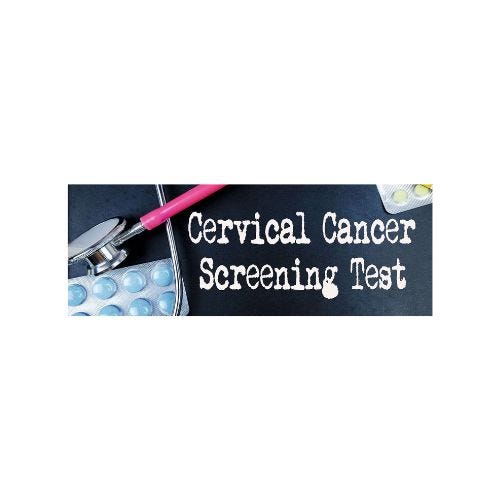
Cervical cancer screening is a critical component of women’s health. It is a proactive measure to detect potential issues early and enables timely intervention. Many women avoid the process, often due to discomfort or lack of understanding. However, this necessary preventive care can save lives. This comprehensive guide will explain cervical cancer screening, covering the nuances of Pap smears and HPV testing. This article will lay out the importance of the process and address potential concerns. This guide will explore the specifics of these tests, why they’re vital, and how to prepare. We’ll also discuss the significance of early detection and how to access resources.
Understanding Cervical Cancer: A Foundation for Informed Decisions
What is Cervical Cancer?
Cervical cancer is a type of cancer that develops in the cervix, the lower part of the uterus that connects to the vagina. It often arises from human papillomavirus (HPV) infection, although not all HPV infections lead to cancer. Early detection is key to effective treatment and improved outcomes. A variety of factors contribute to its occurrence, and regular screening is vital for identifying and addressing potential concerns promptly. The earlier cancer is detected, the better the chances of successful treatment and recovery. According to the American Cancer Society, cervical cancer is preventable with regular screening. This underscores the importance of proactive measures in maintaining women’s health.
Pap Smears: A Vital Screening Tool
What is a Pap Smear?
A Pap smear, also known as a Pap test, is a screening test used to detect abnormal cells in the cervix. During the procedure, a sample of cells is collected from the cervix and examined under a microscope. This examination is instrumental in identifying precancerous or cancerous changes early on. Early detection is critical, as these changes can often be treated successfully before they develop into invasive cancers. The American Cancer Society recommends routine Pap smears for women starting at age 21, or earlier if there are other factors at play. This test plays a crucial role in preventative care and early intervention. The procedure itself typically involves minimal discomfort, and proper preparation can ensure the most accurate results.
HPV Testing: Identifying the Potential Culprit
Understanding the Role of HPV
Human papillomavirus (HPV) is a common viral infection that can affect both men and women. Some types of HPV can increase the risk of developing cervical cancer. HPV testing involves analyzing a sample of cells from the cervix to identify the presence of high-risk HPV types. This testing provides crucial information in risk assessment. Detecting HPV early can help prevent potential complications and allow for proactive measures. Early intervention can be crucial for women’s well-being. Routine screenings can lead to early intervention, preventing the development of more serious conditions. The CDC provides valuable information on HPV and its relation to cervical cancer.
Combining Pap Smears and HPV Testing
A Comprehensive Approach
Combining Pap smears with HPV testing provides a more comprehensive approach to cervical cancer screening. This combination allows for a more accurate risk assessment and earlier detection of potential issues. By analyzing both the cells and the presence of high-risk HPV, healthcare providers can get a clearer picture of a woman’s risk profile. This combined approach is especially important for women over a certain age or those with specific risk factors. The integration of both tests yields valuable information that facilitates personalized care strategies.
Preparing for Your Screening
Important Considerations for the Procedure
Proper preparation for Pap smears and HPV testing can ensure accurate results. Women should avoid douching, sexual intercourse, and using tampons for a day or two before the test. This can help avoid contamination and inaccuracies. Keeping this in mind can ensure the most accurate results possible. Open communication with your doctor is essential. Ask about any specific guidelines or instructions for your individual case.
Additional Resources and Support
Empowering Yourself with Knowledge
There are various organizations providing valuable resources and information about cervical cancer screening. The American Cancer Society and the CDC are excellent sources for detailed information on screening guidelines, risk factors, and treatment options. Consulting these resources can provide a better understanding of potential risk factors and personalized prevention strategies. These resources are an invaluable tool for staying informed and empowered about preventive care.
Frequently Asked Questions
What are the common symptoms of cervical cancer?
Unfortunately, cervical cancer frequently doesn’t manifest with noticeable symptoms in its early stages. This is a strong reason for routine screening. As the disease progresses, possible symptoms include abnormal vaginal bleeding, pelvic pain, unusual discharge, or pain during sexual intercourse. However, these symptoms may also be attributed to other conditions, hence the importance of regular screenings for early detection. Consult your healthcare provider for a complete evaluation if you experience any of these or similar symptoms.
How often should I get screened for cervical cancer?
The frequency of cervical cancer screening depends on several factors, including your age, medical history, and other individual risk factors. Consult your healthcare provider for recommendations based on your specific circumstances and risk assessment.
In summary, understanding cervical cancer screening is crucial for women’s health. Pap smears and HPV testing are vital tools in early detection, allowing for timely intervention and potentially saving lives. By prioritizing routine screenings and educating themselves about the process, women can take proactive steps toward protecting their health. Schedule your next appointment today and empower yourself with knowledge! Contact your doctor or local health clinic for more details on available screening options and resources.